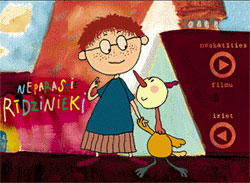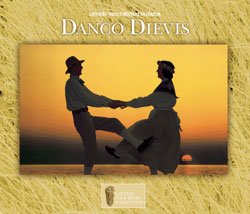In recent months, Viesturs Zariņš and Juris Mazutis have offered their thoughts on the Latvian community in North America. I wanted to put in my 5 cents’ worth, although none of my statements will be as intellectual or highly developed as theirs.
When one uses the phrase “Latvian community in North America,” it immediately conjures up dozens, if not hundreds, of different issues. However, I would like to address only one: parents teaching or not teaching their children Latvian.
While reading The Washington Post one recent morning, I came across an article about immersion programs that was rather relevant to the topic of Latvian language acquisition in Latvian families outside of Latvia. (To clarify, I’m referring to “total immersion programs,” in regular Monday-Friday, September-June schools, which, according to the Center for Applied Linguistics, teach all or part of their curriculum through a second language.) Virginia Collier, a George Mason University professor who has done research on second language acquistion, was quoted in the article: “There is oodles of research showing the tremendous advantage with acquiring a second language. The stimulus of acquiring a second language raises the intellectual academic achievement of all students.”
Thus, my initial question: If you have the opportunity of giving your children this great gift at home—without sending them to a special school—why not do so?
The swimming pool analogy
In his commentary, Mazutis wrote: “For parents who had counted on two weeks of ‘immersion’ as remedial magic that would correct years of linguistic neglect at home, non-acceptance of their children was a tragic surprise. Which part of ‘unqualified’ ( resulting in ‘excluded’ ) did they not understand? They have no one to blame for disappointment and anger but themselves. The standards a family ‘lives to’ (which later on open opportunities, or set roadblocks for offspring) are not trivial investments.”
As a friend of mine commented, Mazutis’ observation might not be a politically correct thing to express. But it is most certainly true. As someone who spends the vast majority of her life in the Latvian community, I see this situation too frequently. Whatever a Latvian summer camp does in two weeks will not replace what is done in the home the other 50 weeks of the year, just as whatever a Latvian Saturday or Sunday school can accomplish in four hours a week will not undo what takes place in the child’s home the other 164 hours of the week.
Think of it this way: if I push a fully clothed person into a swimming pool on Saturday, and she climbs out, her clothes will be dry by the following Saturday. However, if keep pushing this person back into the pool every single day of the week, her clothes will never fully dry.
Just do it
How many of us know families in which the parents are of different religious faiths, but go through the trouble of introducing their children to both faiths so that, when the children are old enough, they themselves can chose which faith, if any, they would like to pursue further?
I would suggest something similar with the Latvian language. We all know that different languages and ethnicities are an essential part of humanity. If you have the chance of giving your child the gift of a second (or, third, as the case may be) language, do so! I have met far too many adults of Latvian heritage whose parents did not make the effort to teach them Latvian, resulting in their children later having to ask, “Why?”
The year is 2003, and North American families that speak a language other than English at home presumably do not face the same problems and prejudices as such families faced in the 1950s. I believe that society has progressed in the past 50 years, and most intelligent people see the benefits of bi- or multilingualism.
‘Sorry’ does not cut it
My interest in immersion programs reaches beyond its relevance to being Latvian in America. Back in 1981, when I was five and my sister was four years old, we began attending a German immersion school, one of the very first of its kind. This was after we had learned Latvian (at home) and English (through playing with neighbors, attending a preschool and watching Sesame Street).
When most Americans find out that I was learning three languages by the age of five, they are amazed. Having been brought up in another language and culture (Latvian) is already astounding enough, but being sent to an immersion program on top of that?!
Certainly, teaching one’s children Latvian is not easy. But what in life is easy? Give your children the opportunity and option to learn another language, to be a part of another culture, so that they can make the choice as to whether pursue it or not.
A young Latvian-American woman I know recently asked her father why he and her mother (both of whom are Latvian) had not spoken Latvian at home, resulting in her and her brother not knowing the language. He had no answer. All he could say was, “Sorry.” Unfortunately, “sorry” does not cut it in this situation.
Similarly, just last month I met a young man of Latvian descent (his father is Latvian, his mother is not), who is struggling to learn Latvian, which certainly is not an easy language for an adult to learn. Most parents know that young children are like sponges. They soak up everything you teach them. The same is not true of a 25-year-old.
My opinions and advice are based only on my own life experiences. However, I can without hesitation say that every single day of my life I am grateful for having been taught Latvian, in addition to being thankful for the various experiences knowing Latvian and being involved in the Latvian community have afforded me.





